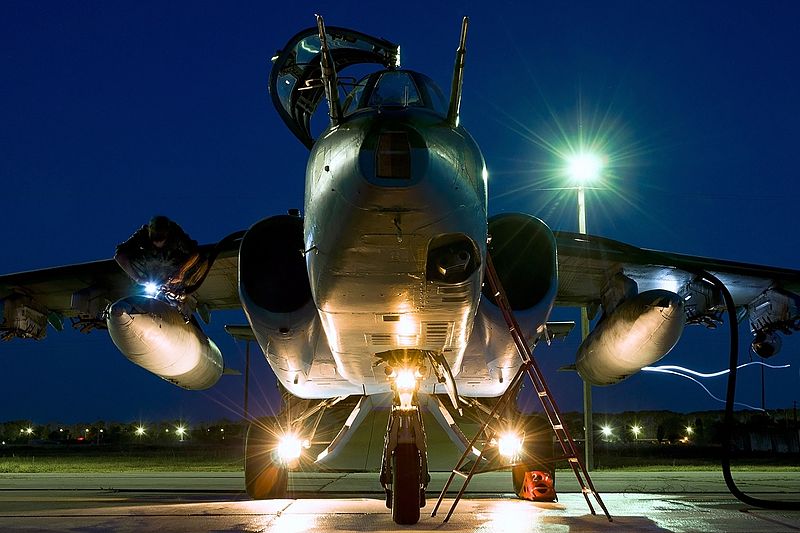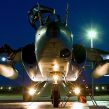
Russian Jets Bomb Syria
Publication: Eurasia Daily Monitor Volume: 12 Issue: 177
By:

On September 30, the upper house of the Russia’s parliament—the Federation Council—unanimously rubberstamped a Kremlin request to use Russian troops abroad after a 15-minute closed session. President Vladimir Putin’s administration chief, Sergei Ivanov, presented the Kremlin’s request and later told reporters that Russian troops will begin an air operation in Syria to defend Russian national interests against “ISIS [Islamic State of Iraq and Syria—later renamed the Islamic State] terrorists” and to prevent the return of Russian citizens, who went to the Middle East to fight for the Islamic State (IS). Ivanov described Russian military action in Syria as “preventive—to meet the [IS] threat in a far-off territory.” According to Ivanov, Russian servicemen will only participate in aerial actions in Syria, while a ground military operation “is out of the question.” Ivanov insisted the sole military objective of the operation is “air support of the Syrian government forces [of President Bashar al-Assad] in their fight against ISIS.” Russian military action in Syria will have a time limit, but Ivanov did not say when it may end (Interfax, September 30).
According to Putin’s press secretary Dmitry Peskov, Russian forces will go into action in Syria “on an absolutely legitimate basis because al-Assad requested military aid,” while the United States and its allies in Syria are “illegitimate, because they do not have a [United Nations] mandate or a request from al-Assad.” According to Peskov, the Russian defense ministry says that only volunteers and contract soldiers will be sent to Syria. The chairman of the Duma (lower house of parliament) defense committee, Admiral (ret.) Vladimir Komoyedov, and the Duma foreign relations committee chairman, Alexei Pushkov, joined by many other Russian observers and commentators, expressed the opinion that during the US-Russian summit in New York, on September 28, President Barack Obama tacitly approved Russia’s military actions in Syria against the IS. According to Komoyedov, the US may join the Russian military operation in Syria (Interfax, September 30).
The Russian air force began bombing runs hours after the Federation Council vote, attacking targets in northern Syria near Homs, Hama and Idlib. Though Russian officials and President Putin previously insisted their country would be targeting the Islamic State, the incoming airstrikes were apparently aimed at areas entirely devoid of IS fighters, instead hitting other Syrian opposition groups. Independently unconfirmed reports describe collateral damage and civilian casualties. The Russian forces went into action in Syria openly, not under cover of being only “advisors” and “technicians,” as usually happened during the Cold War. The official status of “combatants” is beneficial for the Russian soldiers sent to Syria and their families—the men cannot be disowned by authorities, as has been happening with Russian servicemen sent to fight in the Donbas region of Ukraine. Of course, the openness of the Russian action also implies greater difficulty for Moscow to avoid responsibility for the inevitable collateral damage that will accompany Russia’s bombing campaign. Putin and the Kremlin have already been trying to push back against accusations of hitting the wrong targets in Syria, describing such allegations as “information warfare.” Putin expressed his hope that Russian security services and the defense ministry will soon begin exchanging information with their US counterparts (TV 1 channel, October 1).
Russia has deployed a mixed regimental-size air task force to a newly established airbase near Latakia—a Syrian Mediterranean port city north of Tartus. In all, over 50 jets and helicopters have been deployed according to the Russian defense ministry. The base is guarded by a “reinforced Marine tactical battalion group” (TASS, October 1). It was previously reported that a squadron of Su-24M bombers, a squadron of Su-25 attack jets, several Su-30CM fighter-bombers, and helicopters for close air support and pilot rescue/evacuation missions were deployed in Latakia (see EDM, September 25). As officially confirmed, up to six new Su-34 fighter-bombers were deployed to Syria just before the action began. According to the Russian defense ministry, mainly Su-24M and Su-25 jets “modernized for night and day action” have been involved in strike sorties (TASS, October 1). The new Su-34s, which officially entered service only last year, were apparently sent to Syria to test them in real combat. Only the Su-30SM and the multifunctional Su-34s may be effective in air-to-air combat—some ten jets in the entire deployed force. It is basically a ground-attack aerial regiment, and such a force composition implies the Russian command does not intend to take on the US and its allies in aerial combat over Syria. Most likely, this force composition was chosen to send a reassuring signal to the Pentagon that Russia does not seek a direct fight and hopes that a level of tacit cooperation could be established.
The Kremlin announced that the Russian bombing campaign will be closely coordinated with offensive action by supporters of the al-Assad regime, including Iranian and Hezbollah fighters. According to Peskov, Russian forces may withdraw from Syria “as soon as al-Assad’s offensive is over” (Interfax, September 30).
A major offensive seems imminent in the provinces of Homs, Hama and Idlib, in northern Syria, with the Russians bombing from above and al-Assad’s troops attacking on the ground. At present, the Russian air force is softening up the Syrian opposition. This offensive could smash to bits the opposition forces in the north of Syria, which is not an IS stronghold. But the Islamic State was never the main target, as Putin recently declared: “Our international partners say al-Assad is opposed by an opposition, but in fact al-Assad’s army is fighting terrorists” (Top.rbc.ru, September 30). Peskov, when asked by reporters why Russian jets are bombing the secular opposition Free Syrian Army, mused: “Does this Free Army exist in Syria? Did they not all join ISIS?” (Interfax, September 30).
According to the Russian defense ministry, targeting information on what to bomb in Syria is provided by al-Assad’s army staff. Russian forces then use aerial intelligence to assess the targets (Interfax, September 30). The Russian military apparently does not have any independent intelligence about the targets bombed and cannot determine whether they belong to the Islamic State or any other opposition group. The al-Assad people want all the opposition hit and could be branding all of them “ISIS.” The Russians seem unconcerned: For the Kremlin, anyone in armed opposition to al-Assad is a terrorist. A terrible massacre is being prepared in the opposition-controlled regions of Syria, with Russian support. Refugees will stream out of the region fleeing Russian bombs and al-Assad’s forces, while the Obama administration will likely be perceived as morally complicit.




